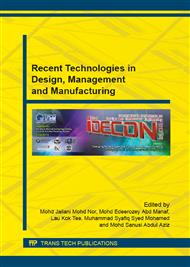p.358
p.364
p.369
p.374
p.380
p.385
p.391
p.397
p.402
Effect of Different Types of Pore-Forming Agent on the Macro Pore Size of Ceramic
Abstract:
The aim of this study is to determine the effect of different types of pore-forming agent and sintering temperature on the pore size of ceramics. The porous ceramic material was developed by mixing of alumina, zeolite and calcium oxide (CaO) as the main materials and ethylene glycol as the binder. Meanwhile, two types of pore-forming agent were used, i.e., yeast and a mixture of aluminium powder and expandable polymeric spheres (EPS). The content of pore-forming agent was at 10 wt% of the mixture and the samples were shaped by using plaster of paris mould. After being dried, the samples were sintered at temperature range of 1000 up to 1500 °C for two hours. Microstructural analysis and pores size measurement were performed to determine the effect of pore-forming agent and sintering temperature on the ceramic. The result showed that yeast yielded larger pore sizes in the porous ceramic upon being sintered at 1400 °C for two hours, which were up to 402 μm. Therefore, yeast has the potential to be utilized as pore-forming agent in development of filter and wall insulation material.
Info:
Periodical:
Pages:
380-384
Citation:
Online since:
May 2015
Keywords:
Price:
Сopyright:
© 2015 Trans Tech Publications Ltd. All Rights Reserved
Share:
Citation:


